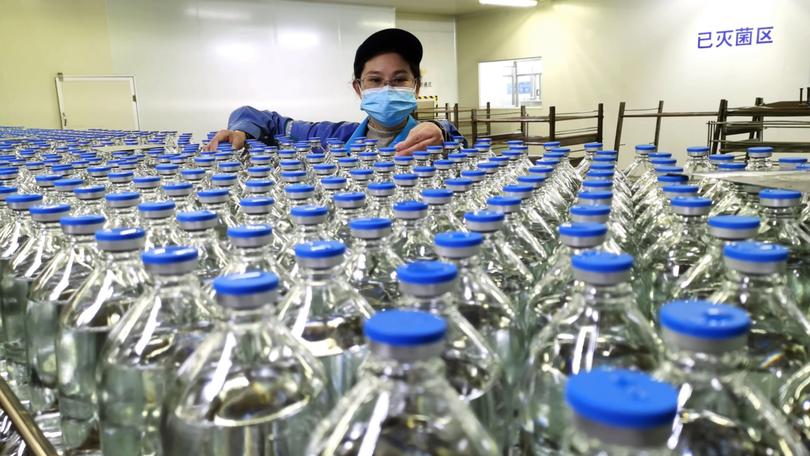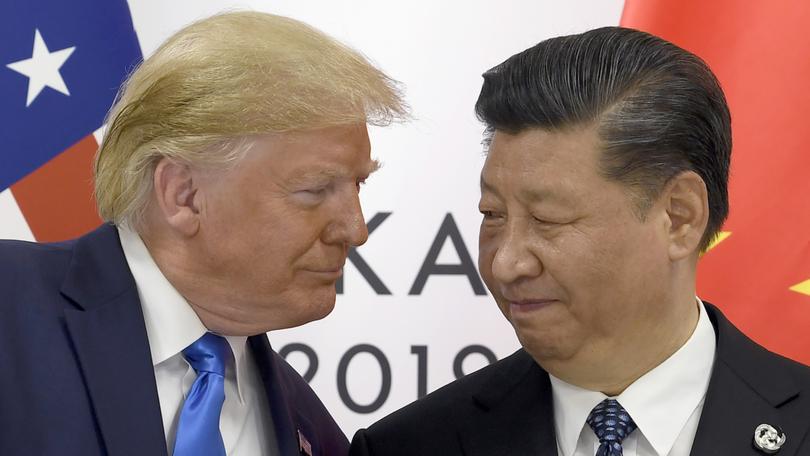The Economist: Will the Chinese biotech boom, including powerful new cancer drugs, survive Trump’s reforms?

Keytruda, a cancer-immunotherapy medicine, ranks among the most lucrative drugs ever sold. Since its launch in 2014 it has raked in over $US130 billion ($204b) in sales for Merck, its American maker, including $US29.5b last year. In September last year an experimental drug did what none had done before. In late-stage trials for non-small-cell lung cancer, it nearly doubled the time patients lived without the disease worsening — to 11.1 months, compared with 5.8 months for Keytruda.
The results were stunning. So too was the nationality of the company behind them. Akeso, a biotech firm, is Chinese.
In recent months China’s progress in artificial intelligence has stunned the world. A quieter, yet equally significant shift is under way in biotech. China has long been known for churning out generic drugs, supplying raw ingredients and managing clinical trials for the pharmaceutical world. But its drugmakers are now also at the cutting edge, producing innovative medicines that are cheaper than the ones they compete with. China has become the second-largest developer of new drugs, behind only America.
Sign up to The Nightly's newsletters.
Get the first look at the digital newspaper, curated daily stories and breaking headlines delivered to your inbox.
By continuing you agree to our Terms and Privacy Policy.As a consequence, Western drugmakers are increasingly looking east for ideas. Because of expiring drug patents, they stand to lose as much as $US140b a year in sales by the end of the decade. Last year nearly a third of their large licensing deals they struck — those worth $US50m or more — were with Chinese firms, triple the share of 2020. LEK, a consultancy, estimates that during that time, the total value of drugs licensed in the West from China rose 15-fold, to $US48b. In November Merck paid $US588m to LaNova Medicines, another Chinese biotech firm, to secure rights to a therapy similar to that produced by Akeso.
China’s government identified biotech as a strategic priority nearly two decades ago. But it was not until 2015 that things really took off, after the national drug regulator launched ambitious reforms. It took on more staff and cleared a backlog of 20,000 drug applications in just two years. Clinical trials were streamlined and brought into step with global standards. A study by Yimin Cui of Peking University and colleagues, published in Nature Reviews Drug Discovery, found that the time taken to approve the first round of human trials fell to 87 days, from 501 days before the reforms.

The reforms coincided with a wave of returning “sea turtles”, the term for Chinese scientists who had studied or worked abroad. China’s vast domestic market added momentum, by drawing every major drugmaker to its shores, bringing know-how and talent. Easier listing rules gave biotech investors a clearer path to exit, making the sector more attractive. Private funding for Chinese biotechs rose from $US1b in 2016 to $US13.4b in 2021.
With more brains and money, Chinese firms moved beyond copying Western drugs. Instead of waiting for patents to expire and making identical generics, they adopted a “fast-follower” strategy — taking known drugs and modifying them to improve safety, efficacy or delivery. Drug development typically starts by identifying a target, usually a protein or gene linked to a disease. Scientists then search for molecules that can either block or boost the target’s function. Since fast followers are not starting from scratch, they can run trials at a fraction of the cost and speed.
Between 2021 and 2024 the number of Chinese drugs in development doubled to 4391. Fast-follower and completely original treatments made up nearly 42 per cent of the pipeline. Helen Chen from LEK notes that China’s approach has been particularly effective in a type of cancer medicine called ADCs, in which an antibody is attached to a payload of chemotherapy via a chemical linker. Since the core components of the treatment already exist, success depends on combining them in the most effective way. Ms Chen believes this is where Chinese firms thrive.
Speed is another advantage, says Michelle Xia, founder of Akeso. “We can do things twice or even three times faster than anywhere else in the world,” she claims. Clinical trials — the longest and most expensive stage of drug development — are faster than in the West. A large patient population makes recruitment easier, and hospitals and doctors are incentivised by the government to support research.
Faster trials have made Chinese drugs even more attractive to global drugmakers. Though the clinical information is from mostly Chinese patients, rather than a wider sample, it helps investors and pharma firms spot promising treatments. And as the quality of data from China has improved, other regulators are paying attention. Results from Akeso’s Chinese trials were strong enough to convince America’s Food and Drug Administration to move the drug straight into late-stage trials.
Few Chinese firms sell their drugs in America directly. Instead they tend to strike licensing deals: a company sells the rights to market its drug outside China in exchange for an upfront payment, milestone-based fees and royalties on future sales. Akeso’s Keytruda competitor was licensed to Summit Therapeutics, an American biotech, for $US500m upfront, with up to $US5b in additional payments and a share of royalties.
Another approach is the “NewCo” model. This involves a Chinese pharma company spinning off its clinical assets into a separate American entity, run by an experienced local management team. The parent firm retains partial ownership, allowing it to benefit beyond royalties if the drug succeeds. Jefferies, an investment bank, estimates that around eight such companies have been formed since May.
China’s biotech boom is not without risks. The rise in licensing deals hides a funding crunch. Private investment in Chinese biotech fell to a seven-year low in 2024, mirroring a slowdown in global biotech markets. Investors are prioritising companies that generate cash or have strong international potential. Jimmy Zhang, an investor based in San Francisco, worries that many of today’s licensing deals are a product of the past funding boom. Without fresh investment, he warns, China’s drug pipeline could run start to run dry.
A bigger concern is rising tensions with America. Because drug prices in the world’s largest economy are less tightly controlled than they are at home, American patients are a big source of revenue for Chinese biotech firms.

American trade restrictions apply to high-tech goods; Chinese biotech has so far escaped similar scrutiny. An attempt to block Chinese firms from supplying some biotech services and equipment has stalled in Congress. But, with Chinese trade firmly in Donald Trump’s sights, biotech may not be able to escape unscathed for much longer. The approach of selling to America via licensing deals may offer limited protection; already Chinese biotech firms are getting lower licensing fees for their experimental drugs than American counterparts, because of perceived geopolitical risks. Impressive as the pace of Chinese innovation is, it will have to contend with some mighty geopolitical forces.
Originally published as It’s not just AI. China’s medicines are surprising the world, too
